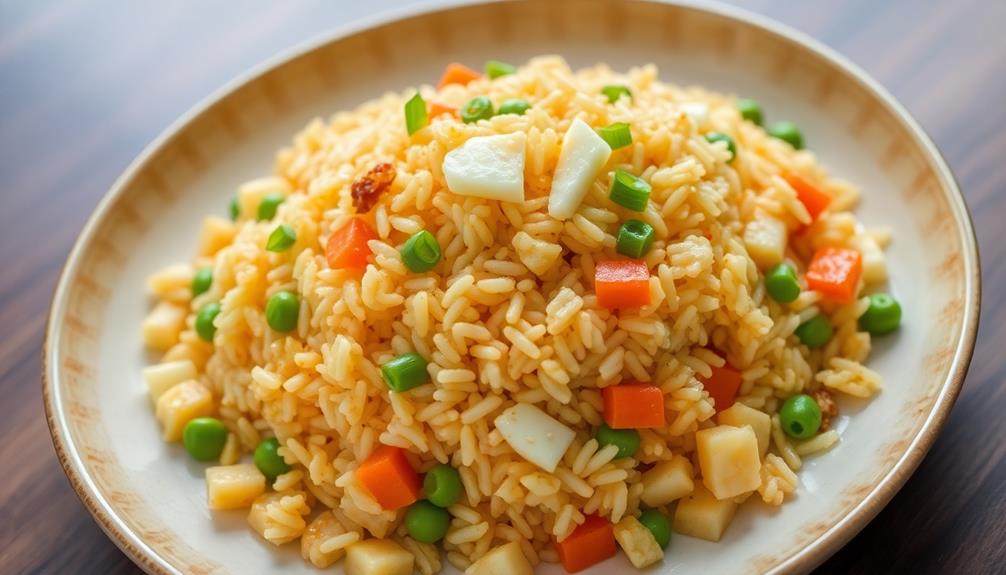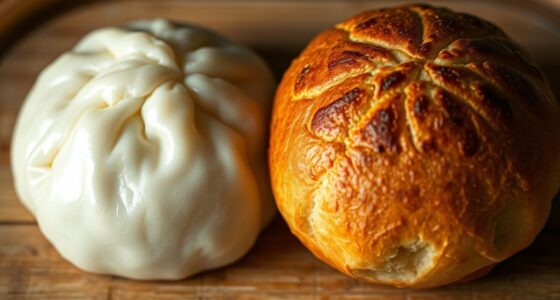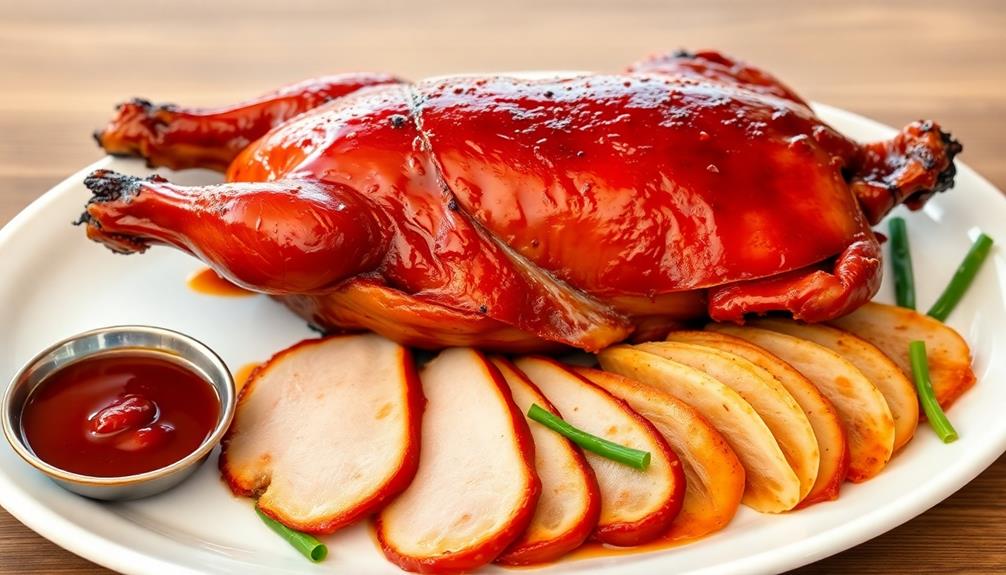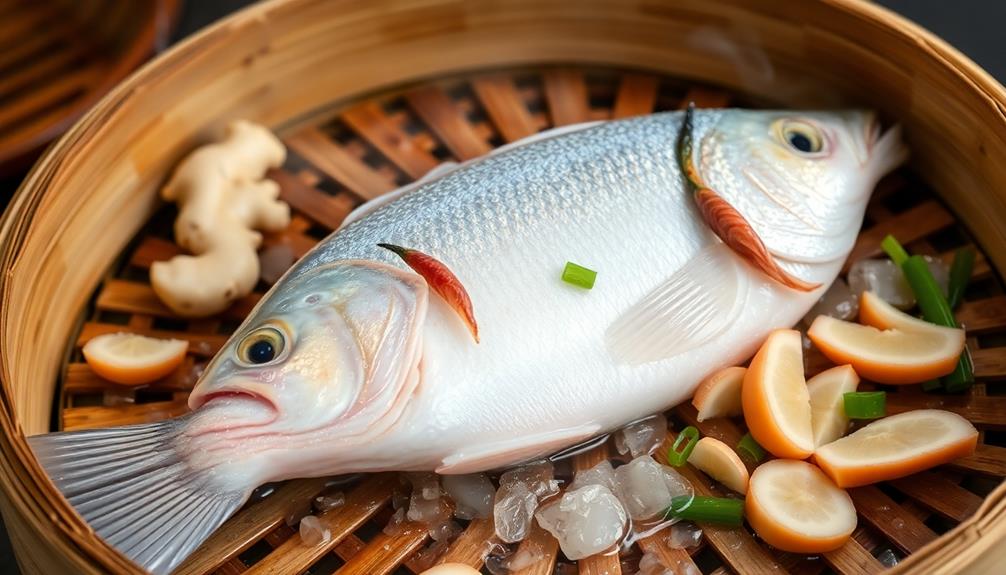Fried rice – it's a classic dish that's been delighting taste buds for centuries! This savory stir-fry started as a way to use up leftover grains in ancient China, and over the years, it's become a beloved staple around the world. The key is using freshly cooked, chilled rice to get that perfect texture. You'll sauté veggies, scramble in some eggs, and toss it all together with soy sauce and seasonings for a meal that's packed with flavor. It's endlessly customizable, so you can get creative with all sorts of tasty additions. And speaking of customization, let's dive into the details on how to make fried rice just the way you like it! If you’re a fan of spicy food, you can kick it up a notch by adding some chili peppers or Sichuan peppercorns for a ma la xiang guo-inspired twist! To make this popular Chinese dish, start by preparing a mix of your favorite protein, vegetables, and a flavorful sauce. Then, follow these steps for how to cook ma la xiang guo: heat up a wok, add in the protein and vegetables, stir-fry until cooked, pour in the sauce, and toss everything together until well combined. Serve it over a steaming hot bowl of rice for a satisfying and spicy meal.
Key Takeaways
- Fried rice is a versatile dish that originates from ancient China, made by stir-frying leftover rice with various ingredients like vegetables, eggs, and soy sauce.
- The key to making good fried rice is using freshly cooked, chilled long-grain rice to prevent stickiness, and sautéing the ingredients at high heat.
- Fried rice can be customized with different proteins, vegetables, and sauces to create unique flavor profiles, making it suitable for various cuisines and meal occasions.
- Fried rice is an excellent way to repurpose leftover rice, reducing food waste and providing a quick, easy, and delicious meal solution.
- Fried rice offers a balance of flavors and textures, and can be a nutritious and kid-friendly dish when made with whole grains and a variety of vegetables.
History
Fried rice's origins can be traced back to the ancient Chinese, who first developed the dish as a way to repurpose leftover grains. Back then, resourceful cooks would toss their leftover rice into a hot wok, stir-frying it with vegetables, eggs, and a splash of soy sauce. This simple yet delicious recipe quickly became a staple in Chinese cuisine.
As trade routes expanded, the knowledge of fried rice spread throughout Asia. Each region put its own unique spin on the dish, adding local ingredients and flavors. In Japan, for instance, they might include seaweed and seafood, while in Thailand, they'd spice it up with chili peppers and fish sauce.
Fried rice's versatility has been a big part of its enduring popularity over the centuries.
Nowadays, fried rice is enjoyed all around the world, from street food stalls to family dinner tables. Whether you prefer it with shrimp, chicken, or just veggies, this timeless dish remains a comforting and satisfying meal.
Recipe
Fried rice is a classic Asian dish that's easy to make and endlessly customizable. The key to delicious fried rice is starting with freshly cooked, chilled rice. This allows the grains to separate and not turn into a sticky mess during the stir-frying process. Additionally, using the right oil, such as sesame or peanut oil, can enhance the overall flavor profile.
Fried rice is a versatile dish that can be a complete meal on its own or served as a side. It's a great way to use up leftover rice and any vegetables or proteins you have on hand. The possibilities are endless when it comes to creating your own signature fried rice.
Ingredients:
- 2 cups cooked and chilled long-grain rice
- 2 tablespoons vegetable, peanut, or sesame oil
- 2 eggs, beaten
- 1 cup diced vegetables (such as carrots, peas, bell peppers, or onions)
- 2 cloves garlic, minced
- 2 tablespoons soy sauce
- 1 teaspoon sesame oil
- Salt and pepper to taste
Instructions:
Heat the oil in a large skillet or wok over high heat. Add the beaten eggs and scramble them, breaking them up into small pieces as they cook. Remove the eggs from the pan and set aside.
Add the diced vegetables and garlic to the pan and stir-fry for 2-3 minutes until the vegetables are tender-crisp. Add the cooked and chilled rice, soy sauce, and sesame oil. Stir-fry the mixture for 5-7 minutes, breaking up any clumps of rice, until the rice is heated through and starts to crisp up.
Return the scrambled eggs to the pan and stir to combine. Season with salt and pepper to taste.
When making fried rice, it's important to use rice that has been cooked and chilled in advance. This helps to ensure that the rice grains remain separate and don't turn into a sticky mess during the stir-frying process.
You can also experiment with different vegetables, proteins, and seasonings to create your own unique version of this versatile dish.
Cooking Steps
First, you'll need to rinse and drain the rice.
Then, sauté the veggies in some oil until they're nice and tender.
After that, add the cooked eggs and a splash of soy sauce and seasonings.
Finally, toss in the cooked rice and give it all a good mix.
Voila, you're on your way to delicious fried rice!
Step 1. Rinse and Drain Rice
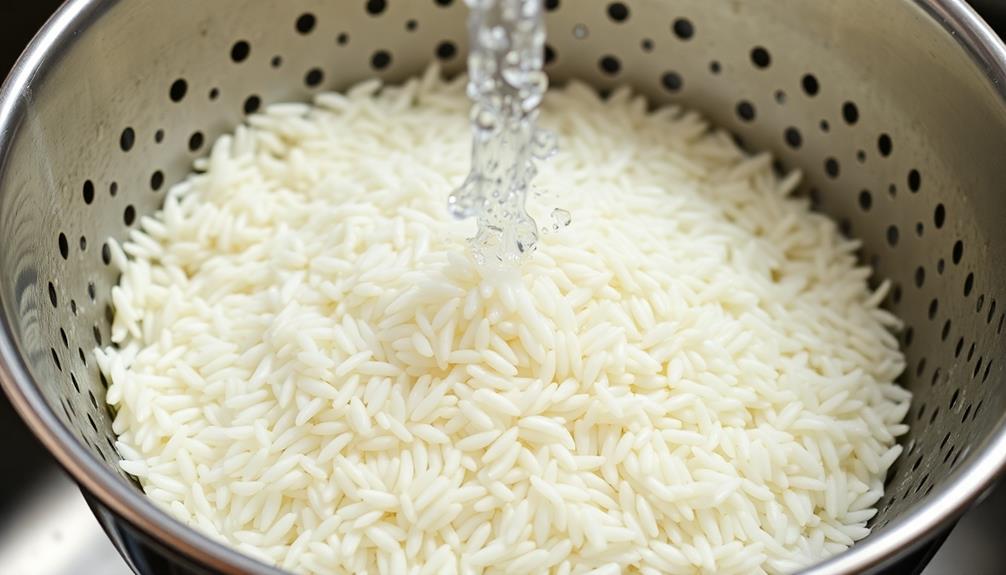
Proper rice preparation is the foundation upon which a delectable fried rice dish is built. First, you'll want to rinse your rice under cool, running water. This removes any excess starch, helping to prevent your fried rice from becoming overly sticky or clumping together.
Grab a mesh strainer and gently swish the rice around, letting the water run through. Once the water runs clear, you're all set!
Next, it's time to drain the rice. Carefully pour the rinsed rice into the strainer, then let it sit for a minute or two to allow any remaining water to drip off.
Shake the strainer gently to help speed up the process. By getting rid of that extra moisture, you'll ensure your fried rice turns out perfectly separated and fluffy.
Now your rice is prepped and ready to be transformed into a flavor-packed, delicious dish!
Step 2. Saute Vegetables in Oil
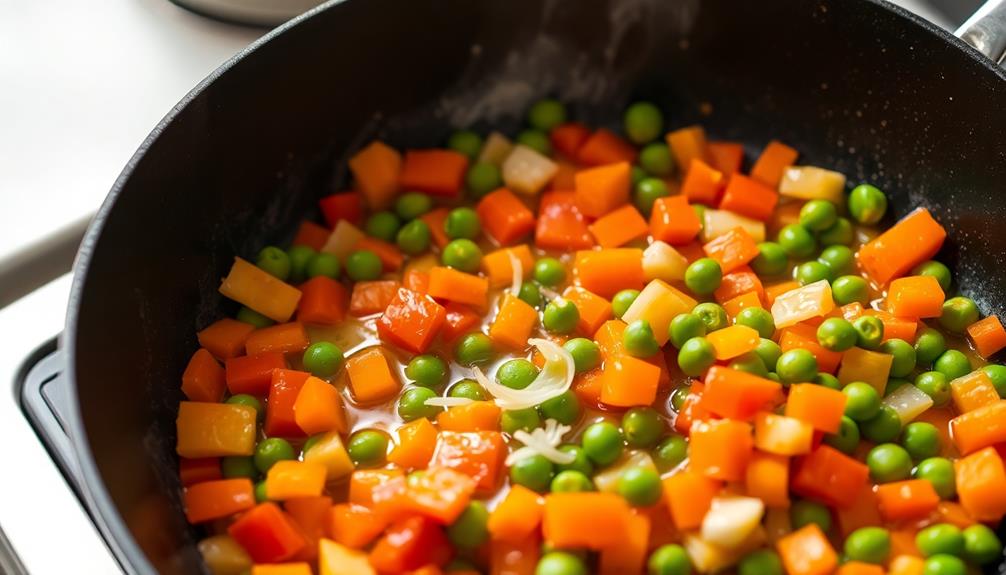
Next, you'll want to sauté the vegetables in oil.
Heat up a large skillet or wok over medium-high heat and add a couple tablespoons of oil. Once the oil is hot, toss in your chopped onions, carrots, and any other veggies you'd like to include.
Stir-fry the veggies for 3-5 minutes, until they start to soften and become fragrant.
Keep the veggies moving around the pan so they don't burn. You can add a splash of soy sauce or a pinch of salt and pepper to season them up. The key is to cook the vegetables until they're tender but still have a little crunch. You don't want them to get mushy.
Once the veggies are sautéed to perfection, you're ready for the next step – adding the cooked rice!
This will help create that classic fried rice flavor and texture. Just be gentle when you stir everything together, so you don't end up with a soggy mess.
Step 3. Add Cooked Eggs

After you've sautéed the vegetables, it's time to add the cooked eggs. Crack a few eggs into a small bowl and whisk them together. Then, pour the beaten eggs into the pan with the sautéed veggies. Stir the mixture constantly as the eggs cook, breaking them up into small pieces. This will create a delicious, fluffy texture that blends perfectly with the other ingredients.
Once the eggs are cooked through, scoot the mixture to the side of the pan. This will create an open space for the next step – adding the cooked rice.
Carefully pour the rice into the open area and let it sizzle for a minute or two. Then, use your spatula to gently mix the rice, eggs, and veggies together. Stir and fold the ingredients until they're evenly combined. Keep the heat high to get that classic fried rice flavor.
Now your fried rice is ready to serve and enjoy!
Step 4. Add Soy Sauce and Seasonings

With the eggs now incorporated, it's time to season your fried rice. First, add a few splashes of soy sauce. This delicious liquid will bring a savory, umami flavor to your dish. Stir it in gently, making sure it gets distributed evenly.
Next, sprinkle in some ground black pepper. This will add a little kick and depth of flavor. Don't be shy – a few good shakes should do the trick!
Now for some garlic powder. This aromatic seasoning will infuse your fried rice with a comforting, garlicky aroma. Just a teaspoon or two should do the trick.
Lastly, consider adding a dash of sesame oil. This nutty oil will enhance the overall Asian-inspired flavor profile. A little goes a long way, so start with just a splash and taste as you go.
Give everything a good stir to blend the flavors. Taste your rice and adjust the seasonings as needed. With the perfect balance of salty, savory, and aromatic notes, your fried rice is well on its way to deliciousness!
Step 5. Add Cooked Rice
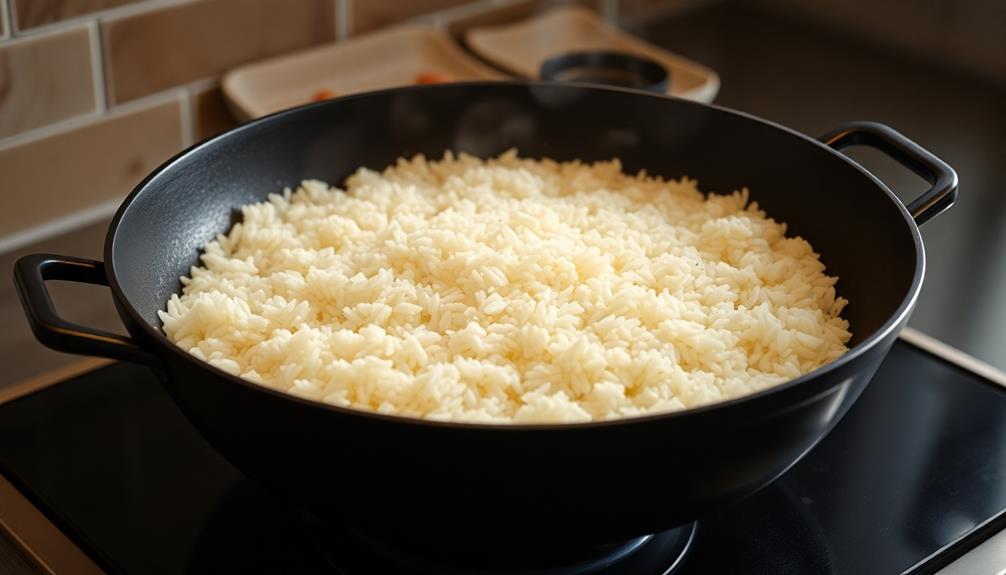
To make your fried rice, you'll want to add the cooked rice. Once you've got your soy sauce and seasonings mixed in, it's time to bring in the star of the show – the rice!
Gently fold the rice into the sizzling pan, making sure to break up any clumps. You'll want to work quickly, stirring and tossing the rice so it gets evenly coated in all those delicious flavors.
Be careful not to overstir, though, or you might end up with mushy rice. Take your time and keep things moving until the rice is heated through and everything is nicely combined.
Now you're really getting somewhere! With the rice added, your fried rice is really starting to come together. The aroma fills the kitchen as the ingredients blend, each grain soaking up the flavors of the soy sauce and vegetables. You can almost imagine this dish being the cousin of an *eight treasure rice recipe*, with its fusion of vibrant textures and tastes. Just a few more final touches, and your masterpiece will be ready to serve!
Keep an eye on the heat and continue cooking until everything is hot and fragrant. Soon, you'll have a tasty, texture-packed dish that's ready to enjoy.
Final Thoughts
Fried rice is a versatile and satisfying dish that can be enjoyed as a main course or a side.
It's the perfect way to use up leftover rice and transform it into something truly delicious. The best part? It's so easy to make!
Once you've mastered the basic technique, you can get creative and experiment with different ingredients.
Try adding your favorite vegetables, proteins, or even a fried egg on top. The possibilities are endless!
Fried rice is also a great way to get your kids to eat their veggies without them even realizing it.
Frequently Asked Questions
What Is the Best Type of Rice for Fried Rice?
You'll want to use a short-grain or medium-grain rice for the best fried rice. Long-grain rice can be too fluffy, while short-grain or medium-grain will hold up better to the stir-frying process.
How Do I Prevent the Rice From Becoming Mushy?
To prevent rice from becoming mushy, use day-old rice or freshly cooked rice that's been chilled. Fluff the rice with a fork before adding it to the wok. Stir-fry the rice quickly over high heat to avoid overcooking.
Can I Use Leftover Rice for Fried Rice?
Absolutely, you can use leftover rice for fried rice! In fact, it's often better than freshly cooked rice as the grains are drier and less likely to become mushy during the stir-frying process.
How Do I Add Protein to Fried Rice?
You can easily add protein to your fried rice. Use cooked chicken, shrimp, or tofu. Simply toss the protein into the pan with the rice and other ingredients. It'll make your fried rice more filling and nutritious.
Can I Make Fried Rice in a Wok?
You can absolutely make fried rice in a wok. The high heat and quick cooking in a wok creates the perfect environment for achieving that authentic fried rice texture and flavor.
